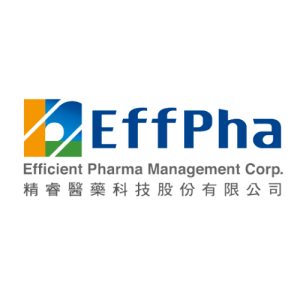FDA Project Optimus-Impact and Response Strategy
廠商名稱:精睿醫藥科技股份有限公司
發佈日期:2025-07-07
攤位號碼:M919
As oncology treatments evolve from traditional cytotoxic chemotherapies to precision‑targeted agents, the FDA finalized guidance emphasizes the importance of early dose optimization. The guidance—titled “Optimizing the Dosage of Human Prescription Drugs and Biological Products for the Treatment of Oncologic Diseases” on August 2024—reinforces FDA expectations that sponsors must proactively evaluate efficacy versus toxicity when selecting doses, beginning in Phase I trials ([1], [2]).
Historically, oncology dose-finding studies have prioritized identifying the maximum tolerated dose (MTD), a strategy appropriate for cytotoxic therapies where increased dosing often correlated with enhanced efficacy, despite heightened toxicity. However, with the advent of targeted therapies and immunotherapies, this approach has proven suboptimal, as efficacy may plateau below the MTD while adverse effects continue to escalate.
In response, Project Optimus, an initiative aimed at reforming dose optimization in oncology drug development, advocates for a paradigm shift from the traditional MTD-centric model to a more holistic approach. This new approach emphasizes the integration of pharmacokinetics (PK), pharmacodynamics (PD), and exposure-response analyses early in the clinical development process. The goal is to identify dosing regimens that maximize therapeutic benefit while minimizing toxicity, thereby enhancing patient safety and treatment efficacy. ([3],[4]).
Project Optimus encourages sponsors to engage in early and ongoing dialogue with the FDA to discuss dose optimization strategies. This includes the design of optimized dose-finding studies that evaluate a range of doses to establish a comprehensive understanding of the dose-response relationship. By adopting this patient-centric approach, the initiative aims to facilitate the development of oncology therapies that are both effective and well-tolerated.
Impact of FDA’s 2024 dose‑optimization guidance (Project Optimus) to pharmaceutical companies—particularly startups:
Incorporating the FDA’s final guidance under Project Optimus presents significant challenges for sponsors, particularly smaller biotechnology firms. Since the release of the draft guidance in January 2023, Phase I studies aligned with Project Optimus have become more complex, often requiring extended durations, increased financial resources, and additional operational efforts due to the necessity for more extensive patient enrollment and data collection.
A primary challenge introduced by the final guidance is the heightened requirement for comprehensive data during early development phases. Specifically, there is an increased emphasis on collecting clinical PK data, PD data, and biomarker information that demonstrates biological effects. Many sponsors currently lack robust Phase I plans capable of gathering sufficient data to accurately identify the biologically optimal dose and substantiate the recommended Phase II dose. This deficiency may lead to substantial FDA feedback on Investigational New Drug (IND) submissions, potentially causing delays in development timelines.
Strategy and Recommendation: Early FDA Engagement and Strategic Trial design
To address the above challenges, it is advisable for sponsors to engage in early and continuous dialogue with the FDA is crucial. This proactive communication can help de-risk dose-finding strategies and ensure alignment with regulatory expectations. Additionally, to adopt integrated first-in-human trial designs that encompass dose escalation, optimization, and expansion within a single protocol is one of the strategical options. Such designs can streamline the development process and reduce redundancies, ultimately facilitating a more efficient development pathway.
- Early FDA Engagement
FDA encourages pre-IND and INTERACT meetings to align dose-optimization plans and model-informed strategies.
- Data Integration
Sponsors either build in-house PK/PD modeling expertise or outsource—to cooperate with CROs or vendors to satisfy these needs.
- Strategic Trial Design Options
Engage early statistical consultation to optimize the study—for instance, by replacing traditional 3+3 methods with Bayesian model-based designs. The BOIN and Backfill BOIN frameworks offer structured, toxicity-based dose adjustment rules that are statistically sound, computationally light, and transparent. These attributes enable faster, more precise decisions and align closely with Project Optimus.
Conclusion
MTD is no longer automatically equated with RP2D. The FDA now emphasizes a structured dose optimization process, as outlined in the guidance and Project Optimus, which advises the evaluation of multiple dosing levels—considering efficacy, safety, pharmacokinetics, pharmacodynamics, and patient-reported outcomes—to identify the optimal therapeutic dose rather than relying solely on MTD
Efficient Pharma Management Corp, an expert-based CRO with extensive experience in early-phase oncology trials, can support sponsors in implementing dose-optimization strategies from the outset of drug development. Our services include:
- Facilitating clear and ongoing interaction with the FDA to ensure alignment with regulatory expectations.
- Provide strategic consultation in trial designing and clinical operation align with Project Optimus.
- Coordinating pharmacokinetic/pharmacodynamic data and interim decision rules.
By leveraging these best practices, Efficient Pharma Management Corp can develop the strategy with Sponsors to meet regulatory standards while streamlining dose-finding, enhancing both development efficiency and patient benefit.
[Reference]
[1]: https://www.federalregister.gov/documents/2024/08/09/2024-17771/optimizing-the-dosage-of-human-prescription-drugs-and-biological-products-for-the-treatment-of.
[2]: https://www.fda.gov/regulatory-information/search-fda-guidance-documents/optimizing-dosage-human-prescription-drugs-and-biological-products-treatment-oncologic-diseases.
[3]: Front Oncol. 2023 Mar 3;13:1144056. doi: 10.3389/fonc.2023.1144056
[4]: Transl Clin Pharmacol. 2022 Jun 22;30(2):71–74. doi: 10.12793/tcp.2022.30.e9
[5]: https://friendsofcancerresearch.org/news/clinical-leader-fda-finalizes-guidance-on-dose-optimization-for-oncology-therapies.
[6]: https://www.fda.gov/media/164555/download.
更多參展商新聞稿
- 國鼎生技推進全球三期臨床在轉移胰臟癌一線治療 國鼎生物科技股份有限公司 / 2025-09-11
- 潤霈生技亞洲生技大展首度登場 眾多明星商品強力吸睛引爆熱潮 潤霈生技股份有限公司 / 2025-08-20
- IOT無線連續監測系統 - 廠房、倉儲、實驗室 溫、濕度測繪 幸託有限公司 / 2025-08-20
- 現場校正、抽檢應用 攜帶式測量儀 幸託有限公司 / 2025-08-07
- 鴻曜醫學取得生技醫藥產業發展條例資格審定 深耕台灣、邁向國際臨床規範 鴻曜醫學股份有限公司 / 2025-07-30
- 突破性幹細胞療法!鴻曜醫學MiSaver ⼼肌梗塞後修復效果顯著 鴻曜醫學股份有限公司 / 2025-07-30
- 鴻曜醫學邁向國際:幹細胞療法 MiSaver® 啟動跨國臨床試驗,打造心血管再生醫療新藍圖 鴻曜醫學股份有限公司 / 2025-07-28
- 思必瑞特生技首次亮相BioAsia!關鍵凍晶技術實現PRP精準醫療 思必瑞特生技股份有限公司 / 2025-07-28
- 賽博生醫攜手捷昇生物科技 引進RASTRUM™加速3D細胞列印與癌症藥物開發 賽博生醫股份有限公司 / 2025-07-27
- 賽博生醫推出FormuGel™ 3D細胞培養膠體平台,整合腫瘤建模×藥效分析×科研服務 賽博生醫股份有限公司 / 2025-07-26
- 賽博生醫攜手成大比較醫學研究中心 打造高通量高擬真的3D腫瘤藥篩平台 賽博生醫股份有限公司 / 2025-07-26
- 啟弘生技與AAVnerGene攜手合作下世代腺相關病毒(AAV)載體製程研發 啟弘生物科技股份有限公司 / 2025-07-25
- 7/24-7/27 GBC普生在 亞洲生技大展 與您相見 普生股份有限公司 / 2025-07-25
- 普生GBC CellBio™ a2000 榮獲2025愛迪生獎肯定 普生股份有限公司 / 2025-07-24
- 普生竹創大樓開幕啟用 AI精準醫療、大健康佈局再升級 普生股份有限公司 / 2025-07-24
- 誠邀蒞臨|4樓M412 展位「多家廠商聯合座談會」,精彩不容錯過! 利政科技股份有限公司 / 2025-07-24
- 中宇環保工程股份有限公司:生技製藥建廠與製程設備整合專家 利政科技股份有限公司 / 2025-07-24
- 專業實驗室儀器製造商- major science 利政科技 利政科技股份有限公司 / 2025-07-24
- 生展生技應邀參加 Bio Asia 2025 三大創新產品搶攻亞洲保健市場新藍海 ! 生展生物科技股份有限公司 / 2025-07-24
- 銳準生醫全新發布髓易測MyeloTrak™,以非侵入精準檢測革新多發性骨髓瘤管理 銳準生醫股份有限公司 / 2025-07-23




